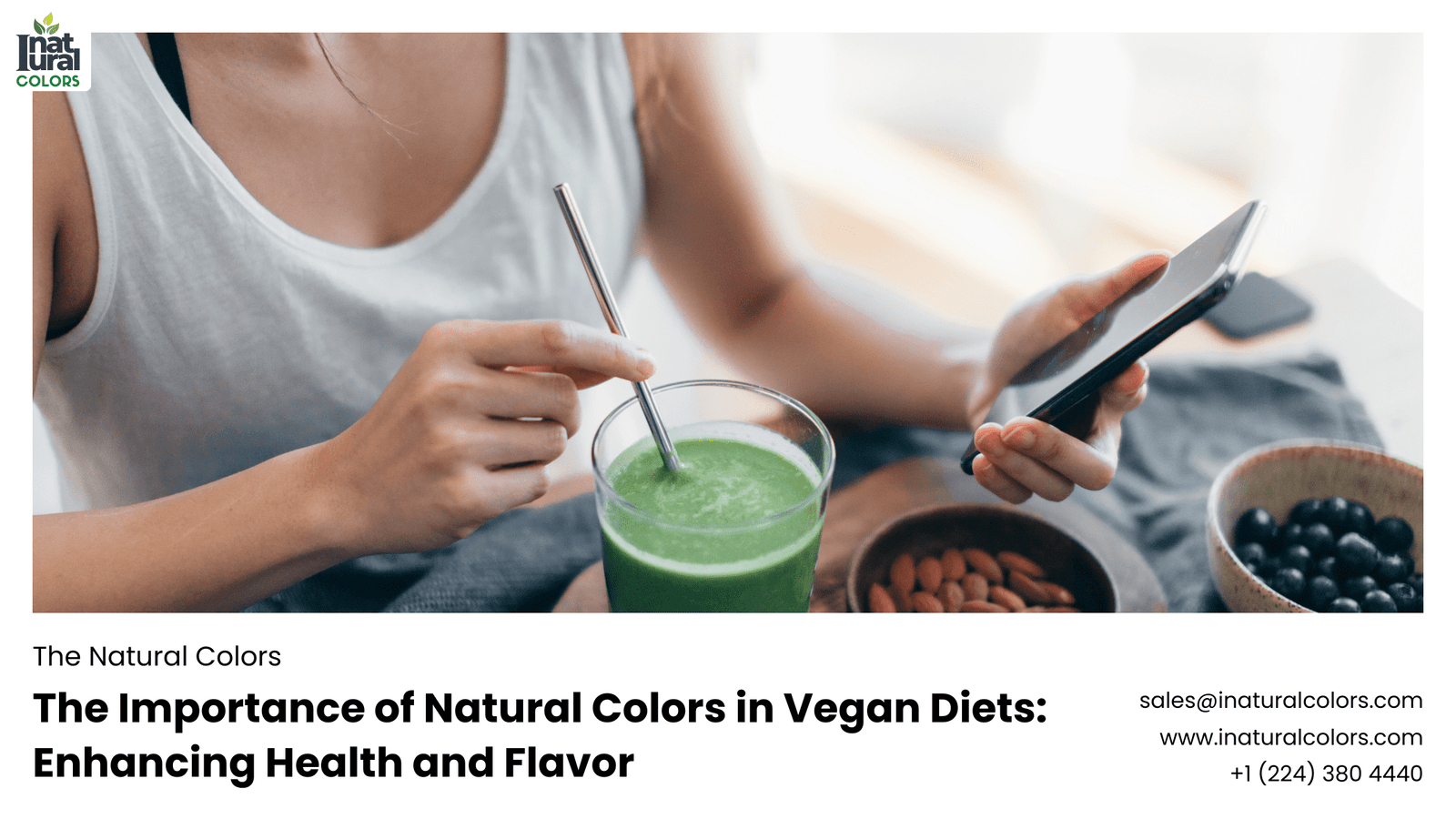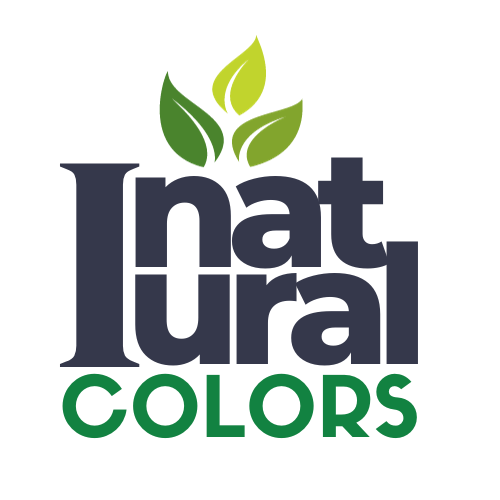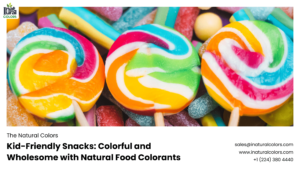Beautiful Plants For Your Interior

Natural Colors in Vegan Diets – Introduction
When you think of a vegan diet, you might envision vibrant salads, colorful smoothie bowls, and richly hued vegetable stir-fries. These colors aren’t just for show; they come from natural pigments found in plants, playing a crucial role in both the appeal and the nutritional value of vegan foods. But what exactly are these natural colors, and why are they so important in a vegan diet? Let’s dive into the world of natural colors and explore their significance.
Understanding Natural Colors
Definition and Sources
Natural colors are pigments derived from plants, fruits, vegetables, and other natural sources. Unlike artificial colors, which are synthesized from chemicals, natural colors come from the inherent hues of the ingredients themselves. Think of the deep green of spinach, the bright orange of carrots, or the vivid red of strawberries. These colors are all examples of natural pigments.
Difference Between Natural and Artificial Colors
The primary difference between natural and artificial colors lies in their origin. While artificial colors are created through chemical processes, natural colors are extracted directly from plant sources. This makes natural colors more appealing to those looking for a healthier, more sustainable diet. Additionally, natural colors often come with added nutritional benefits that artificial colors lack.
The Science Behind Natural Colors
How Colors Are Derived from Plants
Plants produce a variety of pigments, each serving different biological functions. For example, chlorophyll gives plants their green color and is essential for photosynthesis. Carotenoids, responsible for yellow, orange, and red hues, help protect plants from damage caused by light and oxygen. Anthocyanins, which range from red to blue, can act as antioxidants and protect plants from UV radiation.
Benefits of Using Natural Colors
Using natural colors in food isn’t just about aesthetics; it’s also about health. Natural pigments often come with beneficial properties. For instance, many are antioxidants that help fight free radicals in the body. This can reduce the risk of chronic diseases and promote overall health.
Types of Natural Colors in Vegan Foods
Chlorophyll: The Green Pigment
Chlorophyll is found in all green plants and is crucial for photosynthesis. In a vegan diet, chlorophyll-rich foods like spinach, kale, and broccoli are common. These greens are not only colorful but also packed with vitamins and minerals.
Carotenoids: The Yellow to Red Spectrum
Carotenoids are responsible for the vibrant yellows, oranges, and reds in many fruits and vegetables. Carrots, sweet potatoes, and bell peppers are excellent sources. These pigments are known for their antioxidant properties and their role in maintaining eye health.
Anthocyanins: The Red to Blue Range
Anthocyanins provide the red, purple, and blue hues in foods like berries, grapes, and eggplants. They have strong antioxidant properties and can help reduce inflammation and improve heart health.
Betalains: The Unique Purple and Red Hues
Betalains are less common but equally important. They give beets and certain cacti their deep red and purple colors. These pigments have antioxidant and anti-inflammatory properties.
Other Pigments: Tannins and Flavonoids
Tannins and flavonoids are other plant compounds that contribute to the color and nutritional value of vegan foods. They can be found in foods like tea, apples, and onions, offering various health benefits, including improved heart health and reduced cancer risk.
Health Benefits of Natural Colors
Antioxidant Properties
Many natural pigments act as antioxidants, helping to neutralize harmful free radicals in the body. This can reduce oxidative stress and lower the risk of chronic diseases like cancer and heart disease.
Role in Disease Prevention
Natural colors also play a role in disease prevention. For example, carotenoids can help protect against eye diseases, while anthocyanins may reduce the risk of heart disease and certain cancers.
Nutritional Value
Natural colors often indicate the presence of essential nutrients. For instance, the bright orange of carrots indicates a high beta-carotene content, which is vital for vision and immune function.
Natural Colors and Food Perception
Impact on Taste and Flavor Perception
The color of food can significantly impact our perception of its taste and flavor. Bright, vibrant colors can make food more appealing and can even enhance the perceived flavor. For instance, a richly colored berry smoothie may seem sweeter and more flavorful than a dull-colored one.
Psychological Effects of Food Colors
Colors can also have psychological effects. For example, green is often associated with freshness and health, while red can stimulate appetite. Using a variety of natural colors in meals can make them more visually appealing and enjoyable.
Popular Vegan Foods Rich in Natural Colors
Green Leafy Vegetables
Green leafy vegetables like spinach, kale, and Swiss chard are rich in chlorophyll and essential nutrients, making them staples in a vegan diet.
Berries and Fruits
Berries such as strawberries, blueberries, and raspberries are packed with anthocyanins and other beneficial compounds, offering both color and health benefits.
Root Vegetables
Root vegetables like carrots, beets, and sweet potatoes are excellent sources of carotenoids and betalains, adding vibrant colors and nutritional value to meals.
Legumes and Beans
Legumes and beans, such as black beans and lentils, provide a variety of colors and are rich in protein, fiber, and essential nutrients.
Incorporating Natural Colors into a Vegan Diet
Tips for Meal Planning
To incorporate a wide range of natural colors into your vegan diet, aim to include a variety of fruits and vegetables in your meals. Think about “eating the rainbow” to ensure you get a broad spectrum of nutrients.
Recipes to Try
Try recipes like a rainbow salad with mixed greens, bell peppers, carrots, and beets, or a smoothie bowl with berries, banana, and spinach. These dishes not only look beautiful but also provide a wealth of nutrients.
Challenges with Natural Colors
Shelf Life and Stability
One of the challenges with natural colors is their shelf life and stability. Unlike artificial colors, natural pigments can fade or change over time, especially when exposed to light and air.
Seasonal Availability
Some natural colors are only available seasonally. For example, certain fruits and vegetables are not available year-round, which can limit the variety of natural colors in your diet.
Cost Implications
Natural colors can sometimes be more expensive than artificial ones. This is due to the cost of sourcing and processing the plant materials needed to extract the pigments.
Natural Colors in Vegan Processed Foods
Trends in the Food Industry
The food industry is increasingly using natural colors in vegan processed foods. This is driven by consumer demand for healthier, more natural ingredients.
Examples of Products
Examples include plant-based burgers colored with beet juice, dairy-free yogurts with fruit extracts, and vegan cheeses tinted with turmeric or annatto.
Regulations and Standards
Global Standards for Natural Colors
There are various global standards and regulations governing the use of natural colors in foods. These standards ensure that the colors used are safe for consumption and accurately labeled.
Certification for Vegan Products
Certifications like the Vegan Society’s Vegan Trademark can help consumers identify products that meet strict vegan standards, including the use of natural colors.
DIY Natural Colorants
How to Make Your Own Natural Food Dyes
Making your own natural food dyes at home is simple. For example, you can use spinach for green, beets for red, and turmeric for yellow. Just blend the ingredient with a little water and strain the mixture to extract the color.
Safe Practices and Tips
When making natural dyes, ensure that you use fresh, organic produce and clean equipment. Store the dyes in the refrigerator and use them within a few days for the best results.
Sustainability of Natural Colors
Environmental Impact
Using natural colors can be more sustainable than synthetic ones, as they are derived from renewable plant sources. However, it’s important to consider the environmental impact of farming practices and transportation.
Ethical Considerations
Ethical considerations include fair trade practices and ensuring that the production of natural colors does not exploit workers or harm local communities.
Future of Natural Colors in Vegan Diets
Innovations and Research
Ongoing research is focused on finding new sources of natural colors and improving their stability and shelf life. Innovations in biotechnology may also lead to the development of new, sustainable pigments.
Market Trends and Predictions
The market for natural colors is expected to grow as consumers continue to seek out healthier, more natural food options. This trend is likely to drive further innovation and availability of natural colorants in vegan products.
Conclusion
Natural colors play a significant role in vegan diets, offering both aesthetic appeal and numerous health benefits. From their antioxidant properties to their impact on food perception, these pigments are more than just eye candy. By understanding and incorporating a variety of natural colors into your meals, you can enjoy a healthier, more vibrant diet.
FAQs
What are natural food colors?
Natural food colors are pigments derived from plants, fruits, vegetables, and other natural sources. They are used to add color to foods and beverages without the need for synthetic chemicals.
Why are natural colors important in vegan diets?
Natural colors are important in vegan diets because they come with added nutritional benefits and help make meals more visually appealing and enjoyable.
How can I add more natural colors to my meals?
You can add more natural colors to your meals by including a variety of fruits, vegetables, legumes, and grains. Think about “eating the rainbow” to ensure a wide range of nutrients.
Are there any downsides to using natural colors?
One downside to using natural colors is their potential instability and shorter shelf life compared to artificial colors. They can also be more expensive and seasonally limited.
What is the future of natural colors in the food industry?
The future of natural colors in the food industry looks promising, with ongoing research and innovation aimed at finding new sources and improving their stability. The market is expected to grow as consumer demand for natural, healthy products increases.



